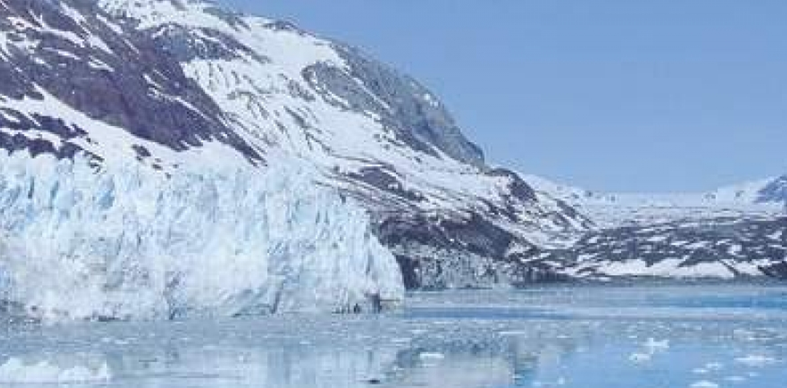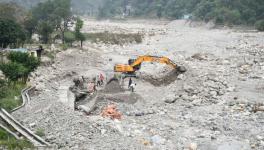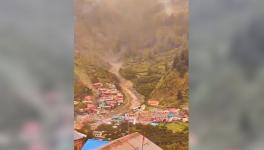New Study Shows Extreme Glacier Loss, Already at 2 Degree Celsius

Image Courtesy: New Indian Express
Tajikistan/Patna: India might have experienced a cool May in 2025, an unusual one, as this month is normally known for extreme heat and heat waves. But global temperature is rising due to greenhouse gas (GHG) emission and continues to pose a serious threat to glaciers.
A latest international scientific study published in the journal, Science, has revealed that glaciers are even more sensitive to global warming than previously estimated; with only 24% of present-day glacier mass remaining if the world warms to 2.7°C, the trajectory set by current climate policies. These figures, however, are global, skewed mostly by the very large glaciers around Antarctica and Greenland.
In contrast, limiting warming to 1.5°C would preserve 54% of glacier mass.
According to scientists and experts engaged in the study, new projections show extreme glacier loss already at 2 degree Celsius. There is an urgent transition from fossil fuels needed to avoid glacier tipping points, they say.
Even the Hindu Kush Himalaya (HKH), where glaciers feed river basins supporting two billion people, show only 25% of 2020 ice remaining at 2°C. Kathmandu-based ICIMOD's recent research study also pointed towards the same.
The glacier regions most important to human communities are even more sensitive, with several losing nearly all glacier ice already at 2°C. This includes the glaciers of the European Alps, the Rockies of the Western US and Canada, and Iceland, with only 10-15% of their 2020 ice levels remaining at 2°C sustained warming. Most hard-hit would be Scandinavia, with no glacier ice remaining at 2°C at all, warns the study.
All four of these regions are committed to losing at least half their ice already at or below 1°C; starkly mirroring a paper released last week setting the safe margin for Antarctic and Greenland ice sheets at or below that same 1°C level, the study finds.
The study highlighted that staying close to 1.5°C on the other hand preserves at least some glacier ice in all regions, even Scandinavia, with 20-30% remaining in the four most sensitive regions; and 40-45% in the Himalayas and Caucuses; stressing the growing urgency of the 1.5°C temperature goal and rapid decarbonisation to achieve it.
These results come amidst rising concern about impacts of glacier and snowpack loss by world leaders as the first global UN conference focused on glaciers opened in Dushanbe, Tajikistan on Friday. Officials from over 50 countries are in attendance, including 30 at ministerial level or higher.
Glaciers in Tajikistan and the rest of Central Asia, serving as water towers across the ancient Silk Road civilisations, stretching from Pakistan to China, maintain twice as much ice at 1.5°C (60% of 2020 levels) as they do at 2°C (30%).
Speaking in Dushanbe, Asian Development Bank Vice-President Yingming Yang said, "Melting glaciers threaten lives on an unprecedented scale, including the livelihoods of more than two billion people in Asia. Switching to clean energy to cut the release of planet-warming emissions remains the most effective way of slowing glacial melt. At the same time," he added, "it is essential to mobilise financing to help the most vulnerable adapt to a future of more floods, droughts, and rising sea levels across Asia and the Pacific."
To get these results, a team of 21 scientists from 10 countries used eight glacier models to calculate the potential ice loss of the more than 200,000 glaciers worldwide, under a wide range of global temperature scenarios. For each scenario, they assumed that temperatures would remain constant for thousands of years.
In all scenarios, the glaciers lose mass rapidly over decades and then continue to melt at a slower pace for centuries, even without further warming. This means they will feel the impact of today’s heat for a long time before settling into a new balance as they retreat to higher altitudes.
“Our study makes it painfully clear that every fraction of a degree matters,” says co-lead author Dr. Harry Zekollari from the Vrije Universiteit Brussel. “The choices we make today will resonate for centuries, determining how much of our glaciers can be preserved.”
"Glaciers are good indicators of climate change because their retreat allows us to see with our own eyes how climate is changing...[but t]he situation for glaciers is actually far worse than visible in the mountains today," says co-lead author Dr. Lilian Schuster from the University of Innsbruck.
A sadly striking feature of the study is that glaciers in the Tropics -- the central Andes of Peru, Ecuador and Colombia, as well as East Africa and Indonesia -- appear to maintain higher levels of ice, but this is only because they have lost so much already. What remains today is at very high altitudes where ice essentially "evaporates," rather than melts.
Venezuela's final glacier, Humboldt, lost glacier status in 2024; Indonesia's ironically named "Infinity Glacier" is likely to follow within the next two years. Germany lost one of its last five remaining glaciers during a heat wave in 2022, and Slovenia's likely lost its last real glacier a few decades ago.
At another high-level conference on mountains and glaciers earlier this month, named the Sagarmatha Dialogues in honour of Mt. Everest (Sagarmatha), Nepal's Prime Minister Oli had underscored their global importance: "Mountains may seem far away. But their breath keeps half the world alive. From the Arctic to the Andes, from the Alps to the Himalayas - they are the Earth’s water towers....and they are in danger."
Get the latest reports & analysis with people's perspective on Protests, movements & deep analytical videos, discussions of the current affairs in your Telegram app. Subscribe to NewsClick's Telegram channel & get Real-Time updates on stories, as they get published on our website.
























